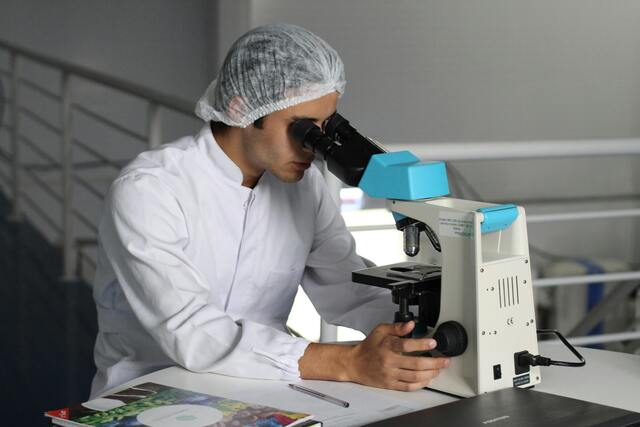A new chapter in advanced cancer care has begun in Boronia, with the opening of a state-of-the-art facility dedicated to the production of a promising cancer treatment known as Antibody Drug Conjugates (ADCs).
IDT Australia officially opened its Ehrlich Bioconjugation Centre at the beginning of July, positioning the local area at the forefront of cancer therapy manufacturing.
The facility is the first in Australia accredited to produce ADCs for research, clinical trials, and commercial use.
Unlike traditional chemotherapy, ADCs are a form of targeted therapy that deliver powerful cancer-fighting agents directly to tumour cells, leaving healthy tissue largely untouched.
Often described as a “biological missile”, the treatment is showing particular promise in breast cancer, especially HER2-positive and triple-negative cases – where it has been linked to improved survival rates and better quality of life.
The IDT Australia chief executive officer Paul McDonald said the local production of ADCs will significantly improve patient access across Australia.
“This new facility enables Victoria and Australia to progress novel ADCs from discovery to treatments that can save lives,” Mr McDonald said.
“We are thrilled with the support of the Victorian Government to accelerate our advanced technology in Antibody Drug Conjugates and add to the State’s capabilities in this progressive technology to treat cancer patients.”
The facility’s opening is also a major step in strengthening Australia’s manufacturing resilience.
By producing ADCs locally, IDT reduces reliance on overseas suppliers and avoids delays tied to global supply chains – this means quicker access for patients and faster development timelines for new treatments.
Operating under global regulatory standards including the TGA, FDA and EMA, IDT’s new centre ensures that locally made ADCs meet the highest international benchmarks.
Backed by the Victorian Government, the project has also delivered a boost to the local economy.
88 highly skilled jobs have been created, ranging from engineering and quality assurance to research and development and with more roles are expected to follow as IDT continues to scale up operations and invest in equipment and infrastructure.
Industry and Advanced Manufacturing minister Colin Brooks, who opened the facility, said the development marked a major milestone for Victoria’s health technologies sector.
“This world-class facility puts Victoria at the forefront of groundbreaking cancer treatment innovation, saving lives and bolstering our sovereign advanced manufacturing capabilities,” Mr Brooks said.
“This new facility will not only support more highly skilled jobs right in the heart of Boronia, it will save countless lives and it reinforces Victoria’s position as a global leader of excellence in medical research,” the Economic Growth and Jobs minister Danny Pearson said.
The facility is named in honour of Nobel Prize-winning scientist Paul Ehrlich, a pioneer in targeted therapy.
IDT brings over five decades of pharmaceutical expertise to this next chapter in cancer treatment, leveraging its experience to expand the state’s presence on the global biopharma stage.
By supporting local biotech and pharmaceutical companies from research through to commercial-scale manufacturing, the centre is helping drive innovation and investment in Victoria’s $21.4 billion health technologies sector. It also opens the door for international partnerships in oncology research and development.
Bayswater member, Jackson Taylor welcomed the facility’s launch in his electorate.
“It’s fantastic to see this world-first cancer treatment being made right here in Boronia – creating local jobs and putting Knox at the cutting edge of global medical innovation,” Mr Taylor said.
As the global ADC market grows, forecast to reach US$140 billion over the next 15 years, the Ehrlich Bioconjugation Centre places Boronia and Victoria firmly in the frame as leaders in the future of cancer care.







